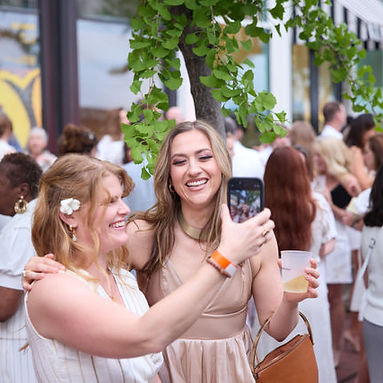
KMAC Couture 2026: ANCESTOR
March 28th, 2026 at KMAC Contemporary Art Museum
KMAC Couture 2026 Chairs: Sarah Ahmad, Trina O'Brien, and Diana Robbins
KMAC Couture 2026 Curatorial Statement
Joey Yates, Curatorial Director,
KMAC Contemporary Art Museum
Art is central for transmitting ancestral roots. We connect with our ancestors in a multitude of ways, including sounds, not just music, but language, accents, and dialects, as well the sounds of nature, like the din from crickets and tree frogs during summer nights in the South. Food is also a source for celebrating heritage, from shared family meals to the tastes and smells of local carnivals and street fairs. We cherish photo albums, tell stories, keep paintings and sculptures as heirlooms, and continue the traditions of quilting and corn shuck dolls as ways to preserve memories of family and culture throughout generations. Clothing can also be a vital tool in expressing the distinct character of one’s ancestral history. For the 2026 KMAC Couture celebration of Art Walks the Runway we want you to explore what the term ancestor means to you and how your idea can best be transformed into wearable art. What a person wears can often help nurture a sense of belonging and community, serving as a guide towards a deeper understanding of both individual and collective identities. The act of adorning our bodies with clothes, jewelry, hairstyles, make-up, piercings, and tattoos, is how we can often connect to the ancient past as well as to this current moment. This is practiced daily within every corner of the globe. Kente cloth, for example, is specifically used and donned to signal a connection to Ghanaian ancestry just as the serape indicates a link to Mexican culture. Batik, a dyeing technique used for creating patterned textiles, has been adopted by artists and designers around the globe in ways that deviate greatly from its origins in Indonesia. British-Nigerian artist Yinka Shonibare has famously used similar batik derived wax-print traditions from West Africa in his work as a way to address the vagaries of cultural identity, as well as the histories of colonialism, and the ongoing postcolonial condition. Traditional Native American clothing uses patterns that feature unique geometric designs, animal shapes and spiritual symbols. Asian textiles like bojagi in Korea and ancient silk traditions in China are kept alive by modern practitioners, and clothes, ranging from the Japanese kimono to the Indian sari, all still function as sources of pride in communicating ancestral spirits. Traditional European lace is still a cherished part of contemporary dresses and gowns, and classic American denim is likewise an indelible component of the modern wardrobe around the world. What fabrics, patterns, or tailored styles do you like to wear that connect you with your cultural history? We can relate to our ancestors in ways that move beyond the customs and traditions of our cultural background. Perhaps there is a profession that runs in your family like a jeweler, doctor, or athlete that you would like to celebrate. Do you have a stamp or coin collector in your lineage, or maybe someone with more random or unusual collections like bottle caps or paper party napkins? Attics and basements commonly have hidden treasures that can remind us of family while also serving as great foundations for a design. Designs may also explore the idea of myth and individual cosmology. The musician Sun Ra, for example, created his own ancestral heritage through his persona of an alien from Saturn who was sent to Earth to promote peace. This personal mythology made him a pioneer of Afrofuturism, the cultural and philosophical movement that has an ongoing influence in music, visual art, literature, film, and other fields related to technology and science. Musicians and pop stars continue to create personas and alter egos with backstories that diverge from their real-life origins. From Bob Dylan to Beyonce, artists often find creative strength in mining fictional territory. The person we ultimately become is often the result of a personal ancestry, people who have inspired our creative side and come from beyond our immediate family. For the 2026 edition of Art Walks the Runway, we want you to explore all the personal and collective factors that have gone into creating the artist that you are today.

SPONSOR RESOURCES
Learn more about becoming a
KMAC Couture 2026 Sponsor!
As a sponsor, you'll not only gain visibility among an engaged and diverse audience, but also enjoy a range of exclusive benefits tailored to your level of support.








